The Balm Blueprint: Choosing the Right Pain Reliever for You
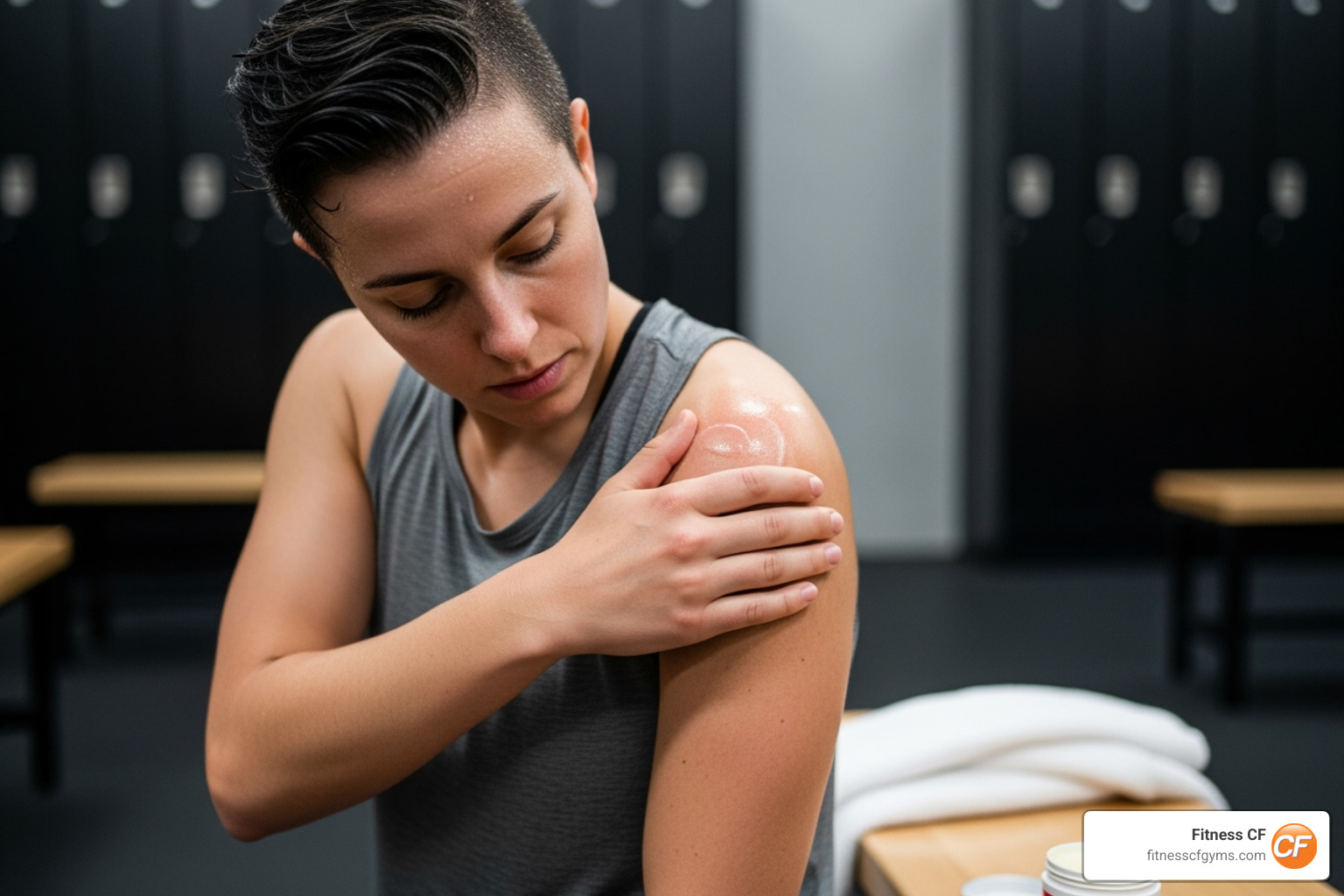
Why Finding the Right Pain Relief Balm Matters for Active Living
Whether you’re dealing with post-workout muscle soreness, chronic joint stiffness, or everyday aches, the right pain relief balm can be a game-changer for your fitness routine. Unlike oral medications, topical balms target pain right where you need it most, helping you stay consistent with your goals.
Understanding what is the best pain relief balm depends on your specific needs. Here are some top choices:
- For general muscle pain: Biofreeze Professional Pain Relief Gel (menthol-based)
- For a budget-friendly option: Tiger Balm Ultra Strength (camphor and menthol)
- For joint inflammation: Voltaren Arthritis Pain Gel (diclofenac)
- For numbing relief: Aspercreme with Lidocaine
Topical analgesics can provide up to 50% pain relief, typically working within 30-60 minutes. This guide will help you steer topical pain relief so you can get back to the activities you love.
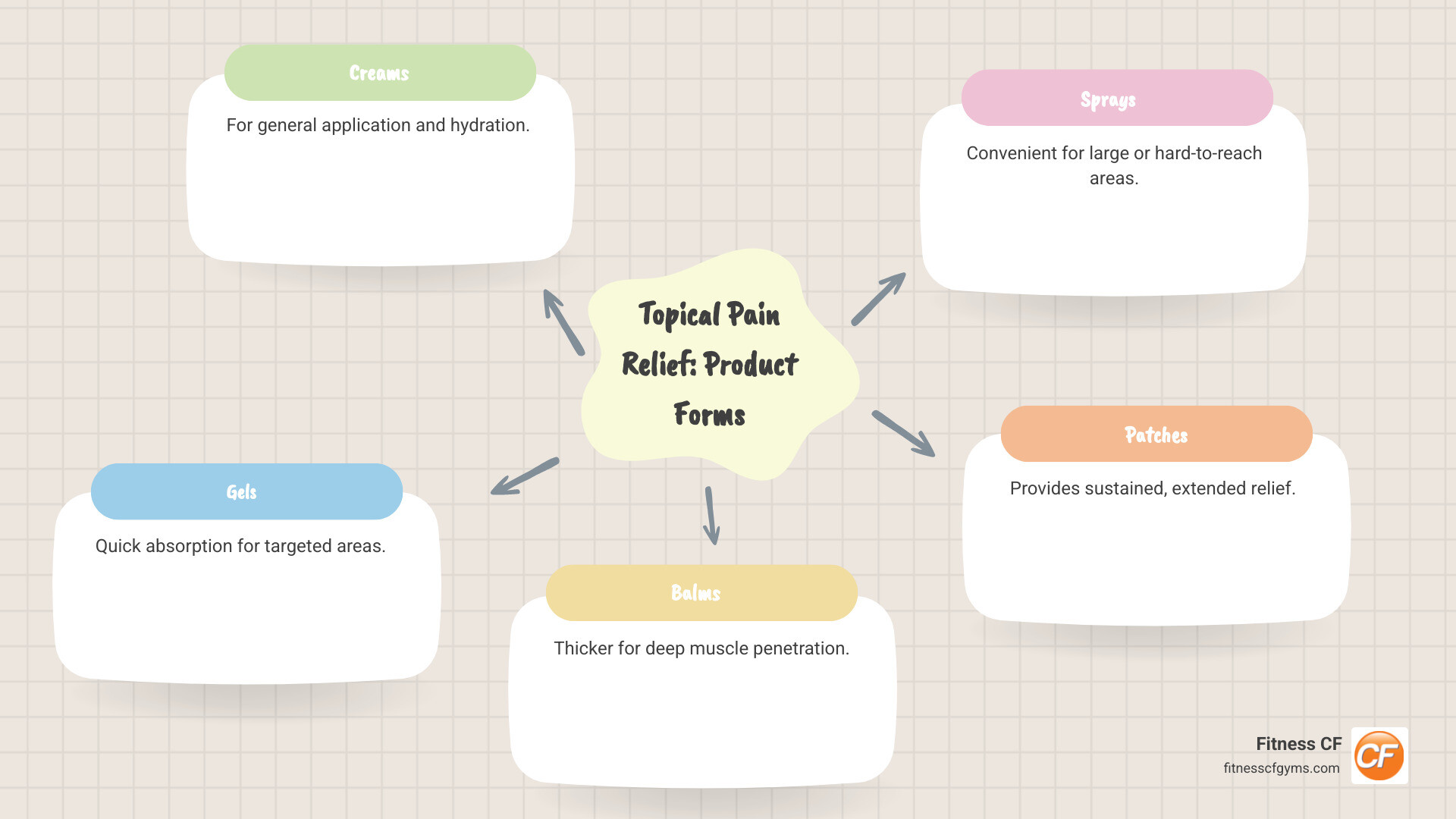
How Pain Relief Balms Work: A Look Beneath the Skin
When pain from a tough strength training session or cardio workout strikes, a topical balm can be your ticket back to feeling great. But how do they work?
Localized treatment is their key advantage. Unlike a pill that travels through your entire system, a balm works directly where you apply it. It absorbs through the skin to deliver targeted relief. These balms work in two main ways:
- Interfering with pain signals: Ingredients create warming or cooling sensations that distract your nervous system, effectively blocking “ouch” messages from reaching the brain.
- Providing anti-inflammatory action: Many formulas contain ingredients that reduce the swelling and inflammation causing the pain, tackling the problem at its source.
Scientific research on topical analgesics confirms they can provide up to 50% pain relief, often within 30-60 minutes. The main benefits over oral medication are fewer systemic side effects and targeted application. The primary drawbacks are the need for reapplication and difficulty reaching certain areas.
While balms are fantastic for managing discomfort, they aren’t a magic fix. They support your fitness journey by keeping you comfortable, but proper exercise form and addressing the root causes of pain are crucial. The ultimate goal is a consistent strength and cardio routine that builds a strong, resilient body.
Decoding the Label: Key Ingredients in Pain Relief Balms
When you’re figuring out what is the best pain relief balm, understanding the active ingredients is your secret weapon. Each one is a different tool for your pain relief toolbox, designed to help you recover from workouts and stay active.
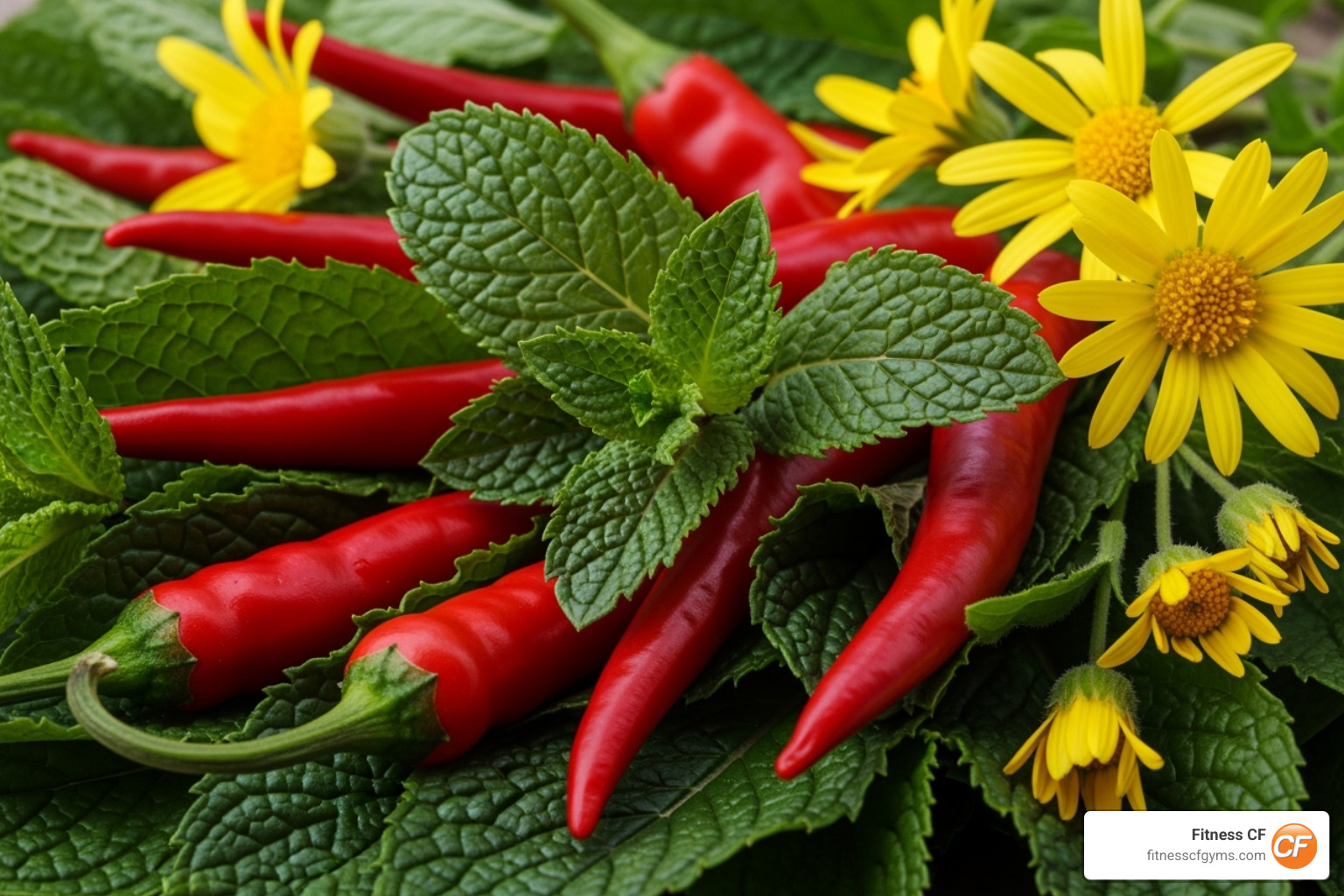
Counterirritants: The Hot and Cold Method
These ingredients create the signature hot or cold sensations that distract your brain from pain. They are excellent for general muscle aches after a challenging cardio or strength session.
- Menthol and Camphor: These are the most common players. Menthol provides an instant cooling sensation, while camphor can feel either warming or cooling. They work together to stimulate nerve endings and interrupt pain signals.
- Eucalyptus oil: Often included for its penetrating properties, it helps carry other active ingredients deeper into the skin.
Anesthetics and NSAIDs: Numbing and Anti-Inflammatory Power
When you need more than a distraction, these ingredients tackle pain directly.
- Lidocaine: This local anesthetic numbs the area by blocking nerve signals. It’s a great choice for those with sensitive skin as it doesn’t create hot or cold sensations. A research study on lidocaine for neck pain found it helpful for muscle-related discomfort.
- Diclofenac sodium: This is a topical nonsteroidal anti-inflammatory drug (NSAID). It works by blocking the production of chemicals that cause pain and swelling, making it highly effective for arthritis and other inflammatory conditions.
Natural Ingredients: Plant-Based Solutions
Nature offers powerful, time-tested remedies for pain relief that are often gentle on the skin.
- Capsaicin: Derived from chili peppers, it works by depleting the nerve cells’ ability to send pain messages over time. It can cause an initial burning sensation but may provide significant long-term relief. Consistent use for up to two weeks is often needed.
- Arnica: This mountain flower has been used for centuries to treat bruises and muscle soreness. Studies show it can be as effective as ibuprofen for osteoarthritis pain.
- CBD: This non-psychoactive compound from hemp works with your body’s systems to regulate inflammation and pain. Anti-inflammatory benefits of CBD research shows it can reduce pain when applied topically.
- Emu oil: This natural anti-inflammatory is often added to formulas to reduce pain and improve the absorption of other ingredients.
What is the Best Pain Relief Balm for Your Specific Pain?
Finding what is the best pain relief balm means matching the ingredients to your specific pain. While regular movement from cardio and strength training is the best long-term strategy for pain management, topical balms are excellent allies for providing the relief you need to stay active and consistent.
For Sore Muscles After a Workout
For the soreness that follows a great workout, cooling counterirritants are your best friend. They soothe tired muscles and distract from the ache.
- Counterirritants like menthol and camphor are ideal. Biofreeze Professional Pain Relief Gel is a top-ranked choice with a fast-acting menthol and camphor formula. For a budget-friendly option, Tiger Balm Ultra Strength Pain Relieving Ointment delivers a powerful cooling effect. If you need maximum strength, Icy Hot PRO Pain Relief Cream has high concentrations of both ingredients. For a plant-based solution, Dr. Bronner’s Arnica-Menthol Organic Magic Balm combines arnica with cooling menthol.
Balms help with recovery, but a proper warm-up and cool-down are your first line of defense.
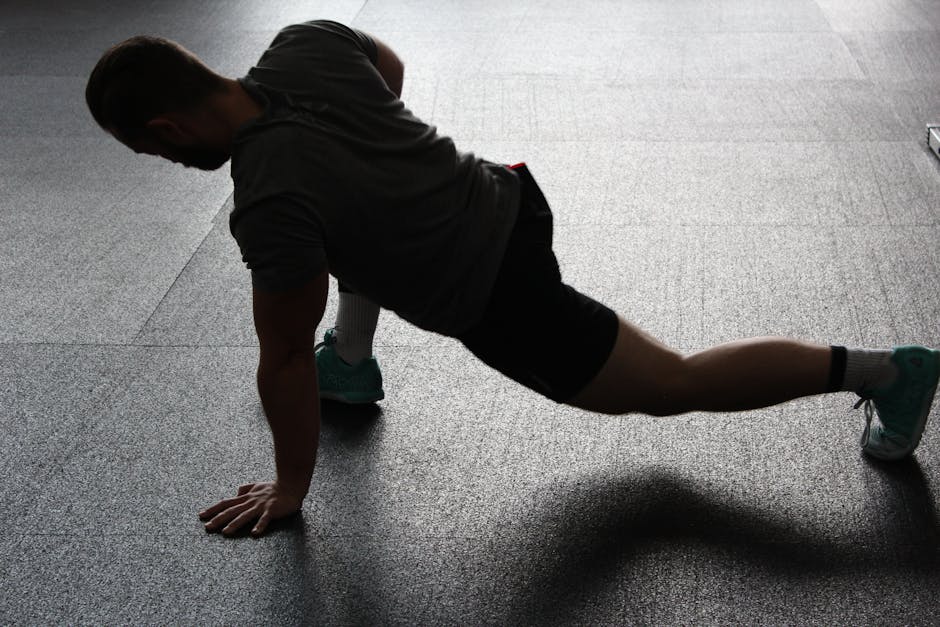
For Chronic Arthritis Pain
For inflammatory conditions like osteoarthritis, you need ingredients that tackle inflammation at its source.
- NSAIDs like diclofenac sodium are highly effective. Voltaren Arthritis Pain Gel is an FDA-approved choice containing this ingredient, offering hours of relief with a mild scent. Its easy-open cap is a bonus for sore joints.
- Natural options can also provide significant relief. Blue Emu Muscle and Joint Deep Soothing Original Analgesic Cream uses emu oil’s anti-inflammatory properties. Capsaicin and Arnica are other effective natural ingredients for chronic joint pain.
Managing arthritis is easier when you pair topical relief with low-impact cardio like swimming or cycling, and strength training to build protective muscle around your joints.
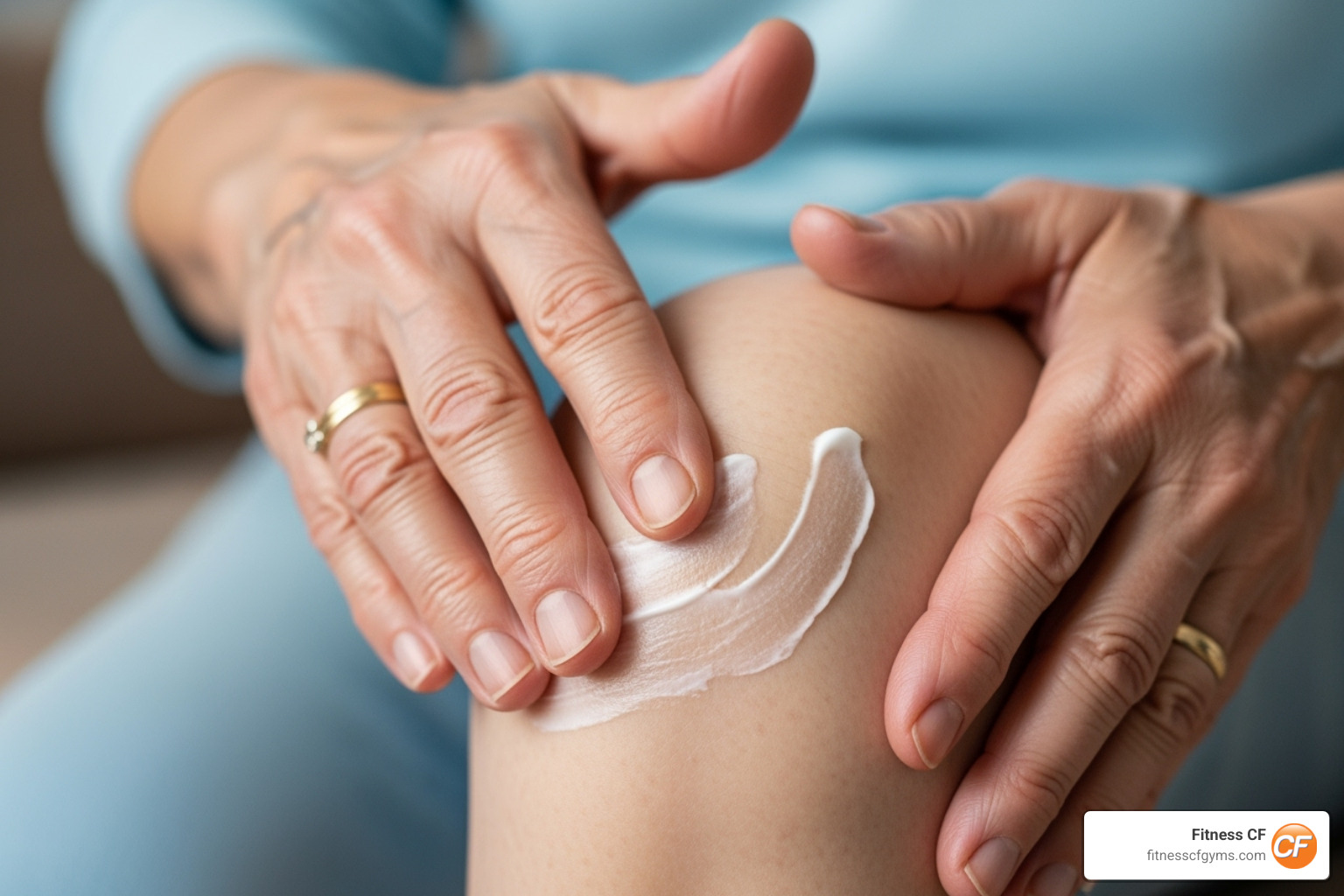
For Sensitive Skin or Mild Scent Preferences
If you have sensitive skin or dislike strong scents, choose formulas that are gentle and fragrance-free.
- Lidocaine-based balms are ideal because they numb the area without any sensation or strong odor. Aspercreme With Lidocaine Maximum Strength Pain Relief Cream is a popular unscented choice.
- Arnica-based products are also gentle. Boiron Arnicare Gel is plant-based and unscented.
- CBD balms often have mild, natural scents and moisturizing properties. Humble Brands CBD Comfort Bar Topical Balm has a fresh, subtle scent of lemongrass and sage.
Always perform a patch test on a small area of skin before using a new product to ensure you don’t have a reaction.
Smart and Safe Application: Getting the Most from Your Balm
Using your pain relief balm correctly makes a huge difference in its effectiveness and safety. Proper application is a healthy habit, just like warming up before a workout, that helps you stay consistent with your strength training and cardio routines.
Best Practices for Using Pain Balms
To get the most from what is the best pain relief balm for you, follow these simple steps:
- Start with clean, dry skin to ensure maximum absorption.
- Apply a thin layer and gently massage it in until absorbed. A little goes a long way.
- Wash your hands thoroughly after application, especially when using products with menthol, camphor, or capsaicin, to avoid accidentally touching your eyes.
- Never apply balms to broken, irritated skin, or near sensitive areas like your eyes, nose, and mouth.
- Do not use heating pads over an area where you’ve applied a balm, as this can cause burns or adverse reactions.
- If you have sensitive skin, always perform a patch test on a small area first and wait 24 hours to check for irritation.
As pain management specialist Dr. Gendai Echezona notes, it’s crucial to follow each product’s specific instructions on application frequency.
What is the best pain relief balm to use with exercise?
Integrating balms into your workout routine can improve performance and recovery. A warming balm applied pre-workout can help increase blood flow to stiff muscles, but it never replaces a proper dynamic warm-up.
Post-workout is where cooling balms truly shine. Ingredients like menthol can soothe tired muscles after a tough session, reducing the ache that might tempt you to skip your next workout. This comfort factor is key for maintaining consistency.
The primary role of balms is symptom management. They reduce discomfort so you can focus on proper form and safe execution of your exercises. However, they don’t fix underlying problems. If you have persistent pain, it’s a sign to address the root cause, whether it’s poor form, muscle imbalances, or overuse.
Consistent exercise is one of the best ways to reduce pain long-term. Strength training builds supportive muscle, and cardio improves circulation. Balms are simply a tool to help you stay comfortable on that journey.
Frequently Asked Questions about Pain Relief Balms
Here are answers to common questions about choosing what is the best pain relief balm for your active lifestyle.
How do topical balms compare to oral pain medications?
The key difference is localized versus systemic treatment. A topical balm is absorbed through the skin to work directly on the tissues underneath. This targeted approach means you’re less likely to experience the systemic side effects (like stomach upset) associated with oral medications, which travel through your entire bloodstream.
However, topicals can sometimes cause skin irritation. Generally, topicals are best for localized, mild-to-moderate pain, like post-workout soreness or arthritis in a specific joint. Oral medications may be better for widespread or severe pain. Both are tools for symptom management. If pain is chronic, it’s important to investigate the root cause and build a fitness routine that strengthens your body over time.
What is the best pain relief balm for sensitive skin?
For sensitive skin, gentleness is key. Look for unscented or fragrance-free formulas.
- Lidocaine-based balms like Aspercreme are often the safest bet, as they numb the area without creating irritating hot or cold sensations.
- Arnica-based products like Boiron Arnicare Gel are also a gentle, plant-based option.
- CBD balms are often formulated with soothing, natural ingredients.
No matter the product, always perform a patch test on a small area of skin and wait 24 hours to check for a reaction.
Can I use a pain relief balm every day?
Always follow the instructions on the product label. As pain specialist Gendai Echezona advises, “each product comes with instructions regarding the recommended frequency of application.” While many are safe for daily use, needing a balm every day suggests it’s time to look at the bigger picture.
Persistent pain is a signal to adopt a more holistic approach. Pain relief balms work best when combined with healthy habits that build a resilient body. Regular exercise is crucial:
- Strength training builds muscle to support and protect your joints, reducing strain and pain over time.
- Cardiovascular exercise improves circulation, which helps reduce inflammation and increases your body’s natural pain tolerance.
By focusing on fitness, proper nutrition, and adequate rest, you may find your reliance on daily pain relief decreases as your body becomes stronger and more resilient.
Conclusion: Beyond the Balm: A Holistic Approach to Pain-Free Living
Finding what is the best pain relief balm is about matching the right ingredients to your needs—whether it’s cooling menthol for post-workout soreness, anti-inflammatory diclofenac for arthritis, or gentle lidocaine for sensitive skin. Topical balms offer targeted relief with fewer side effects than oral medications, helping you manage discomfort and stay on track.
However, the most effective pain relief strategy combines smart topical use with a commitment to an active lifestyle. These balms are fantastic teammates, but they aren’t the whole team.
The real magic happens when you build your body’s own resilience through consistent movement. Strength training creates a natural armor of muscle to support your joints, while cardio activities boost circulation and fight inflammation from the inside out. A balm can be the bridge that keeps you comfortable today so you can build a stronger tomorrow.
As you become more consistent with your fitness routine, you’ll likely find your need for topical relief decreases. Your journey to pain-free living is supported by quality sleep, nutritious food, and stress management, creating a powerful, holistic approach to wellness.
The best pain relief balm is the one that keeps you moving toward your goals. It’s a tool to support your active lifestyle, not replace it.
Explore our fitness classes to build strength and prevent injuries and find how consistent movement can be your most powerful tool for long-term pain prevention. Your future self will thank you for every step you take today toward a stronger, more resilient body.





